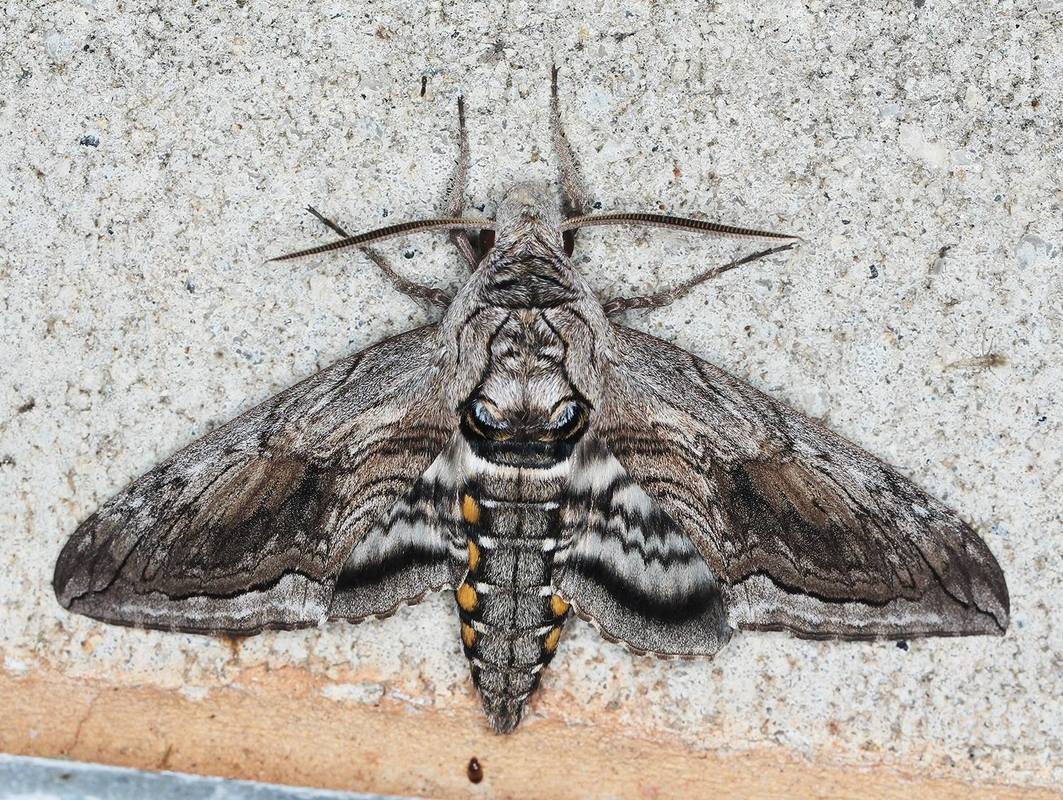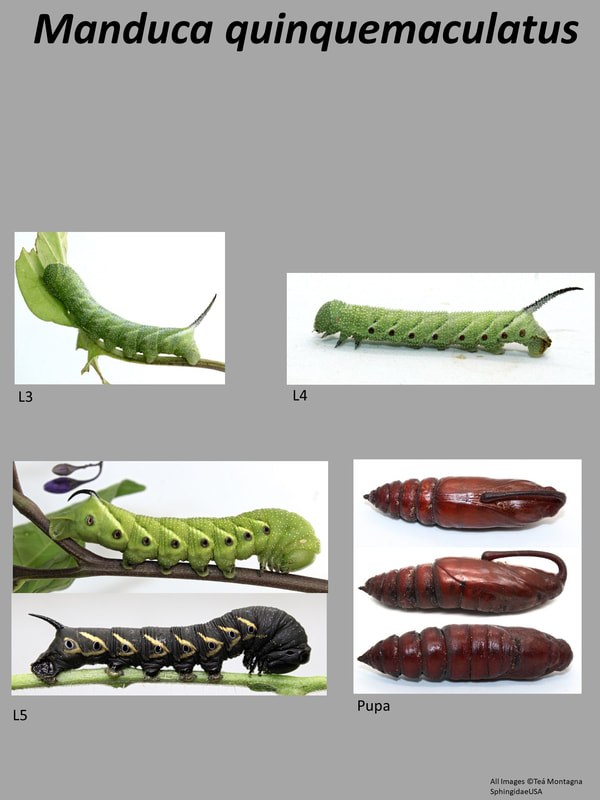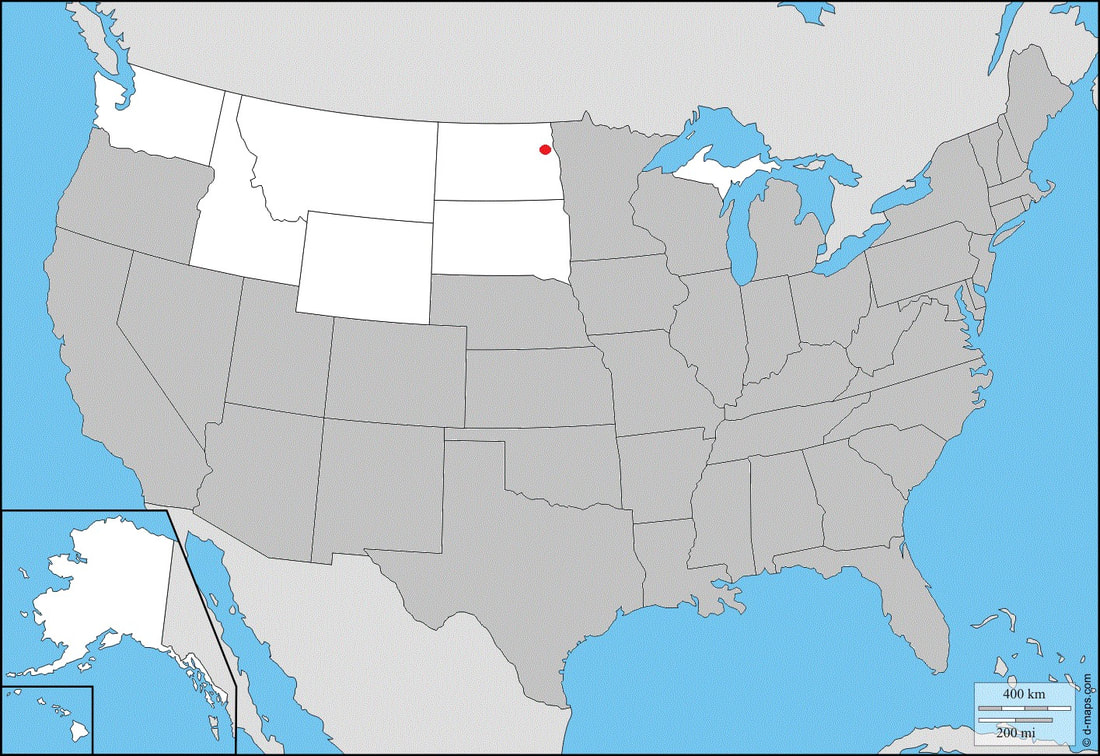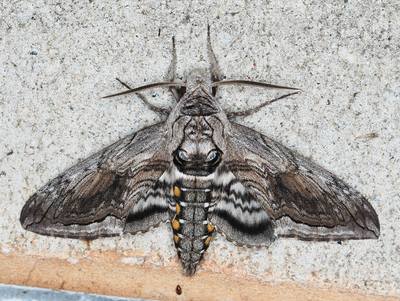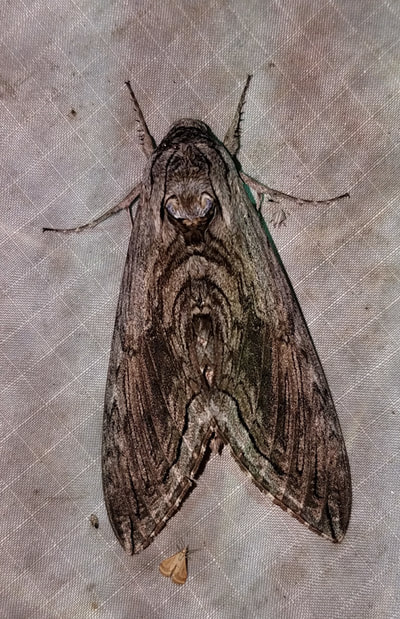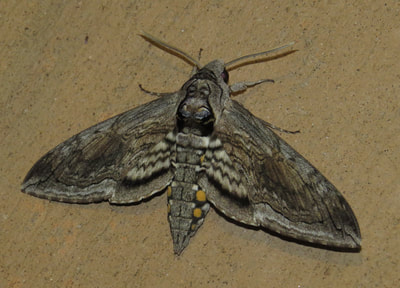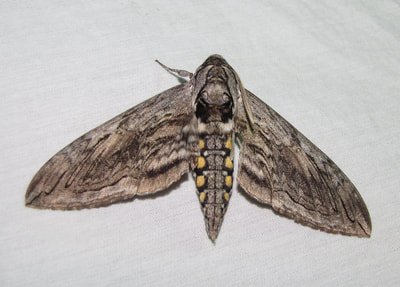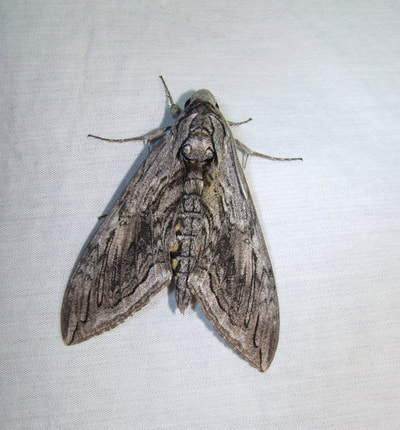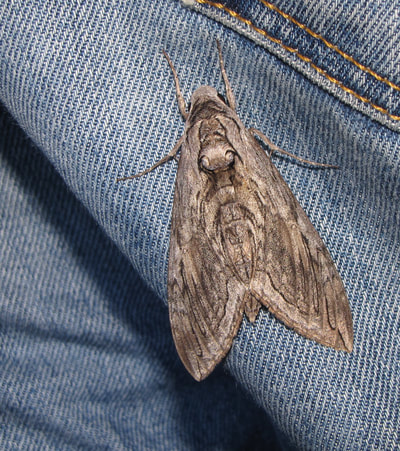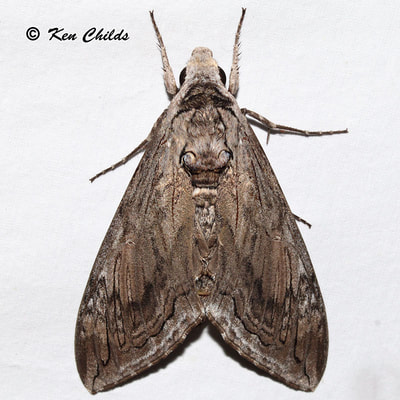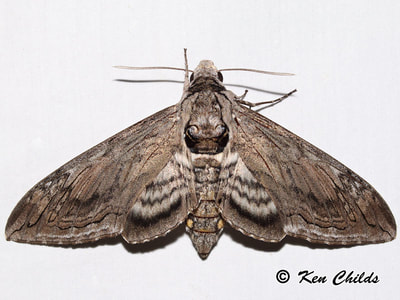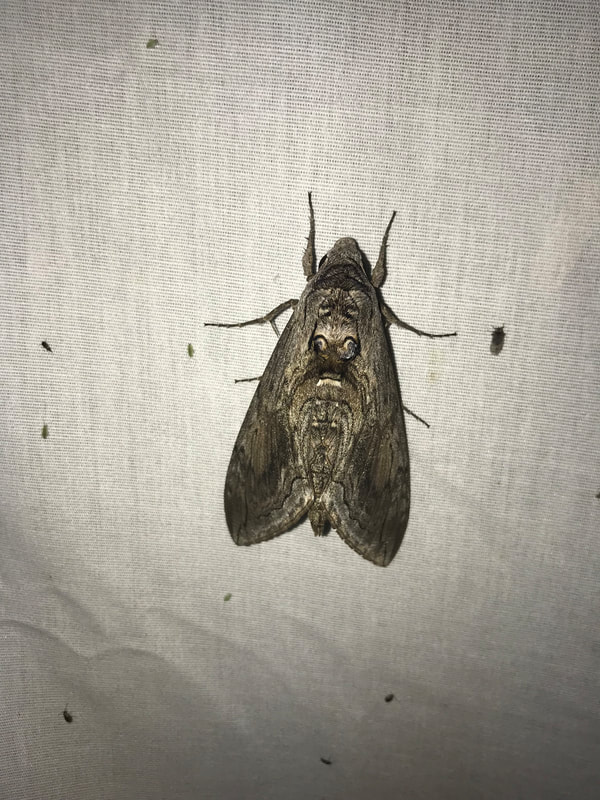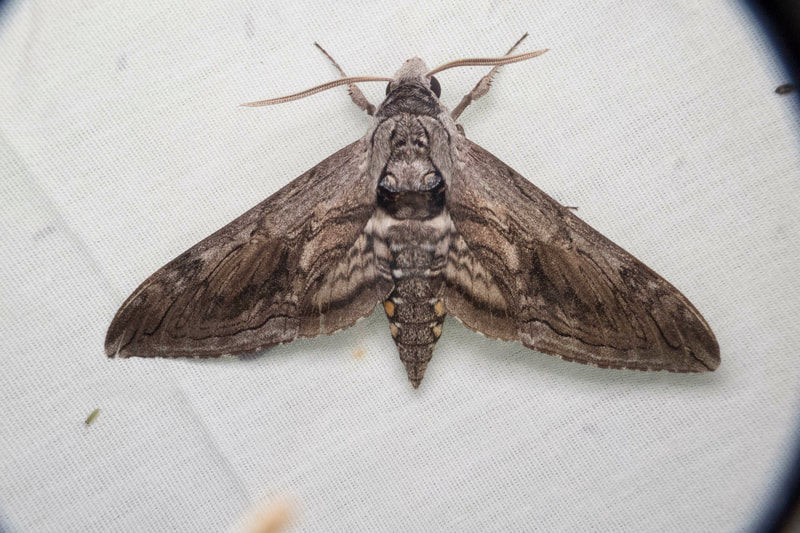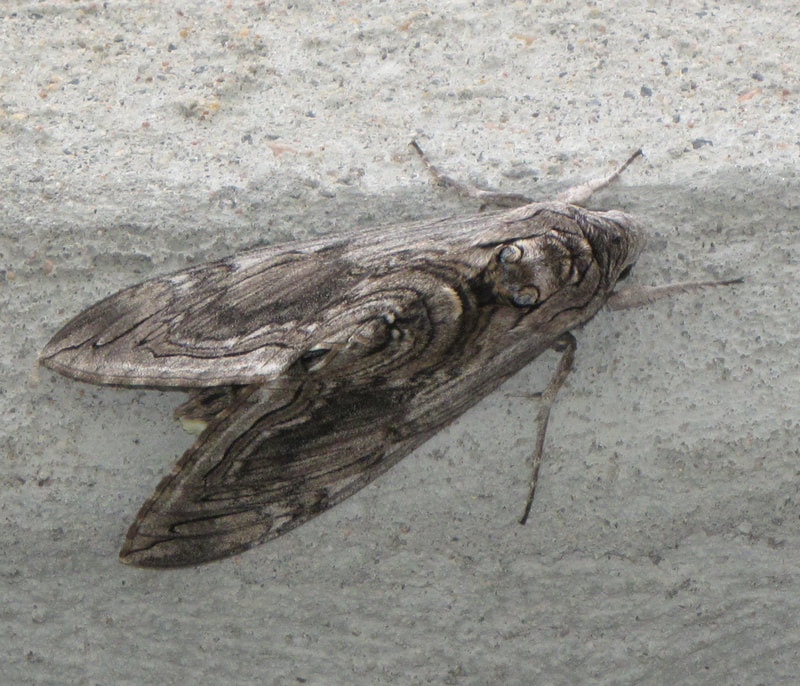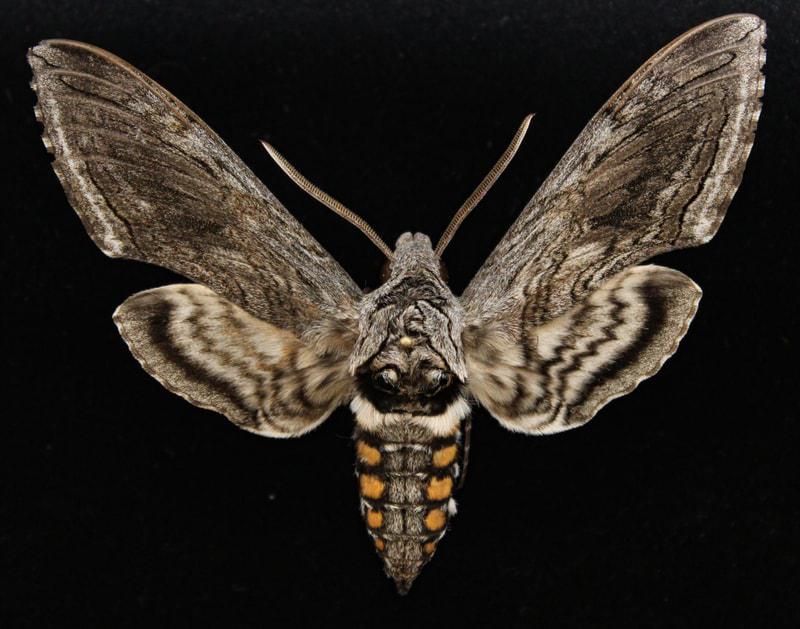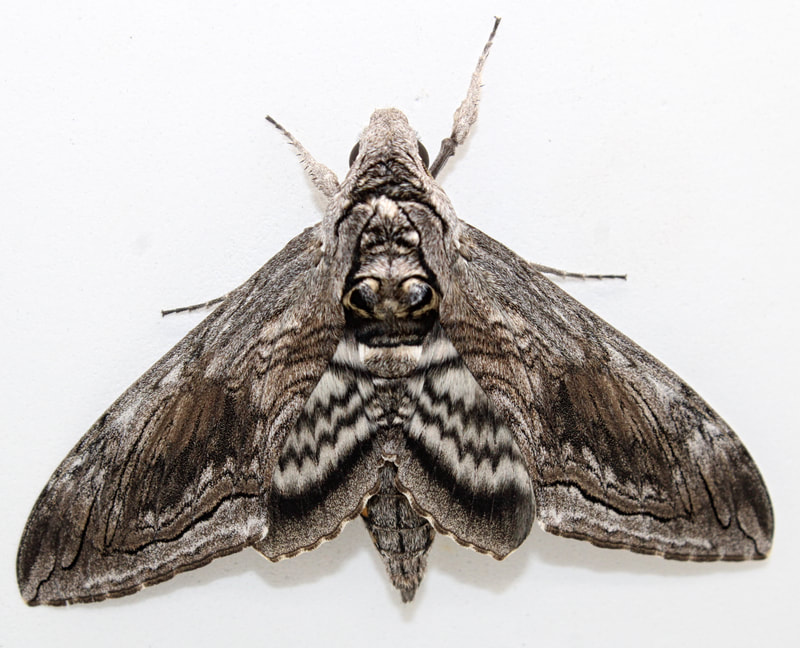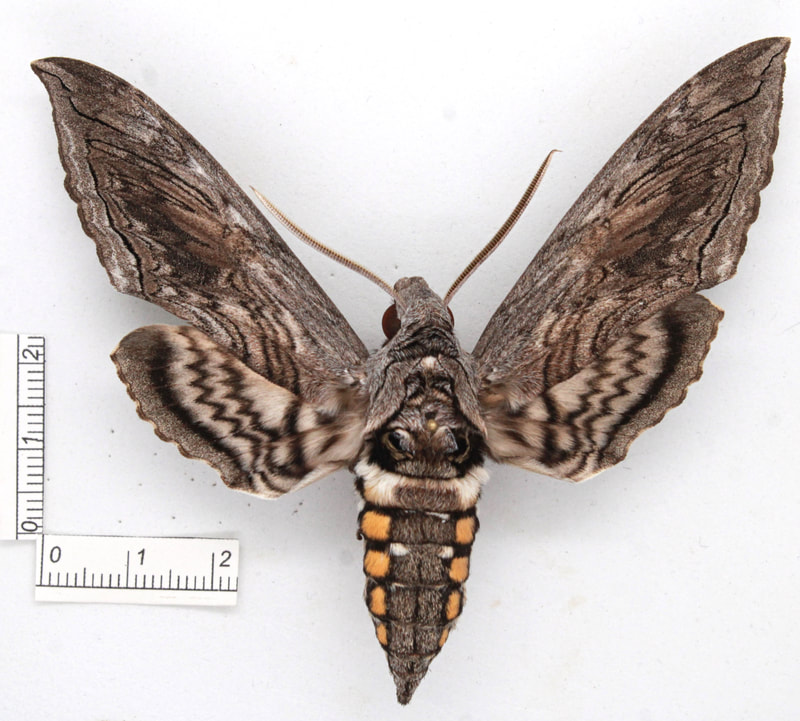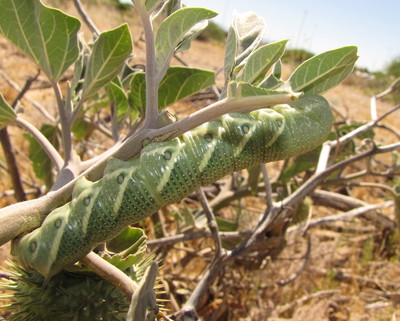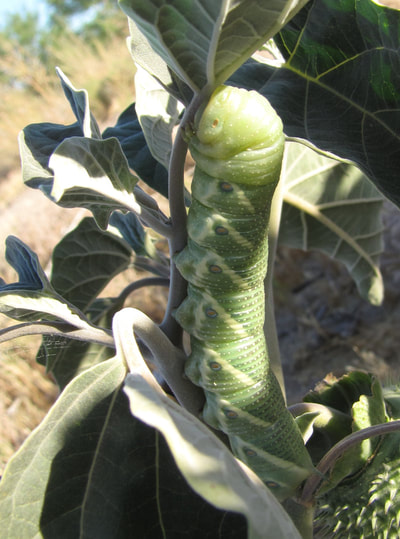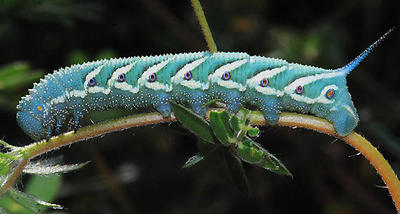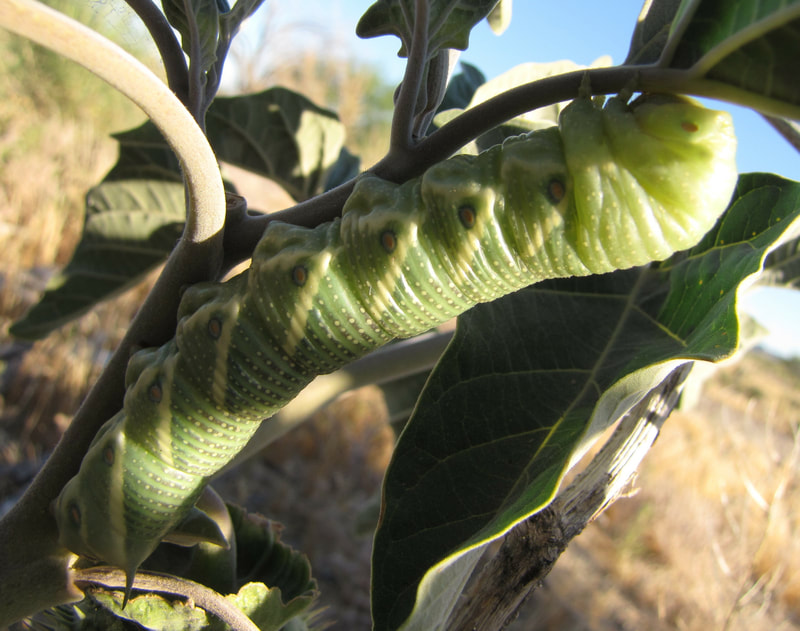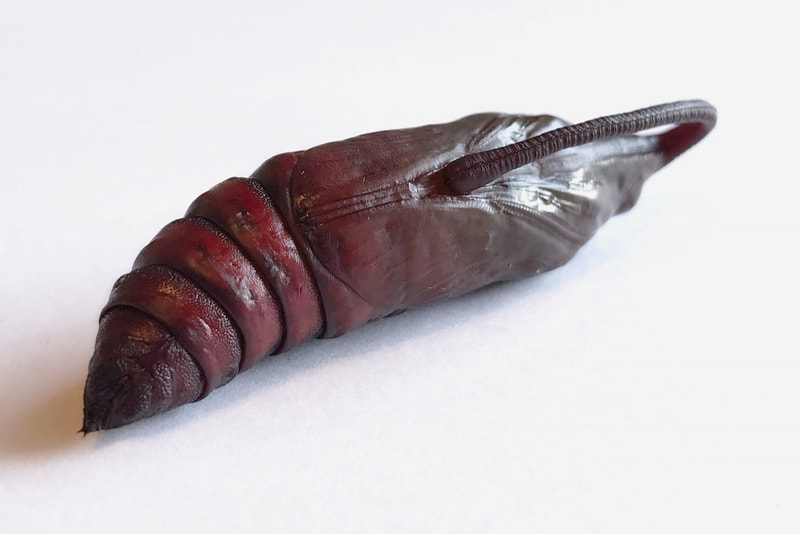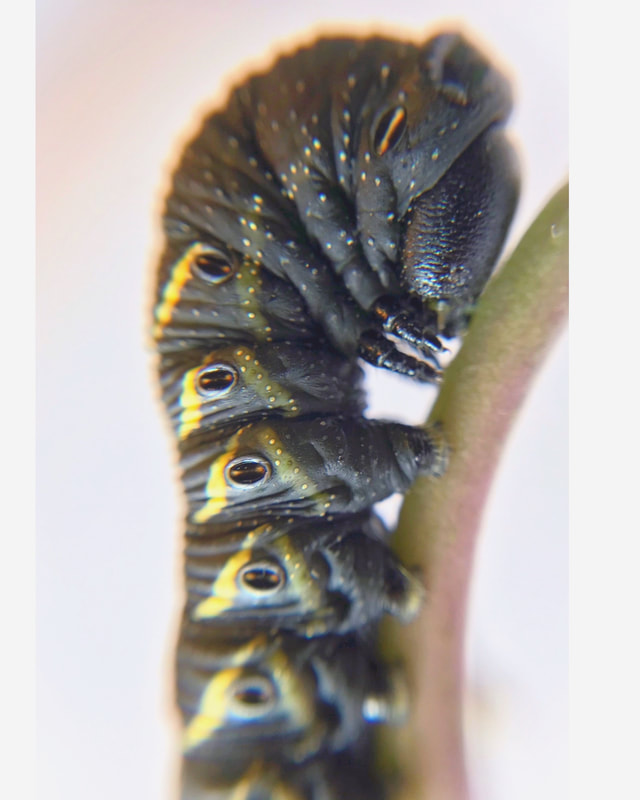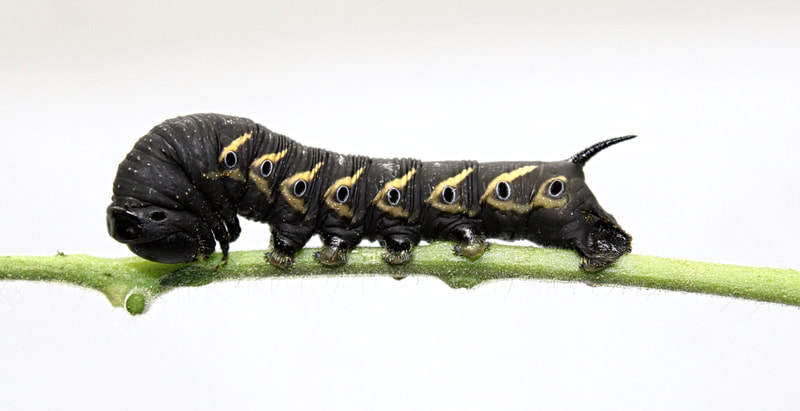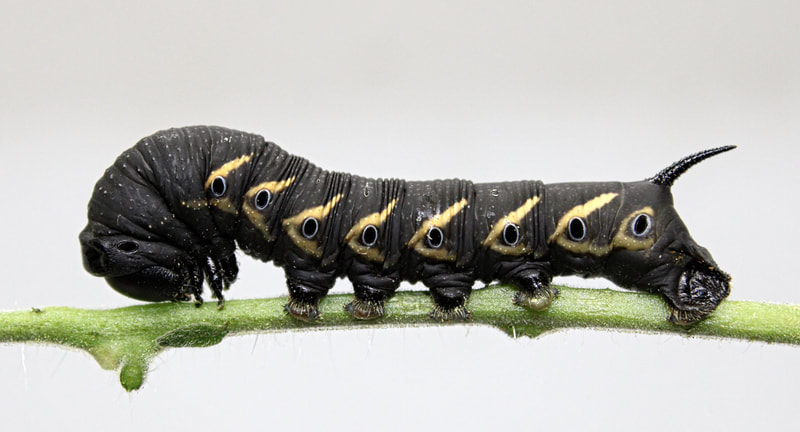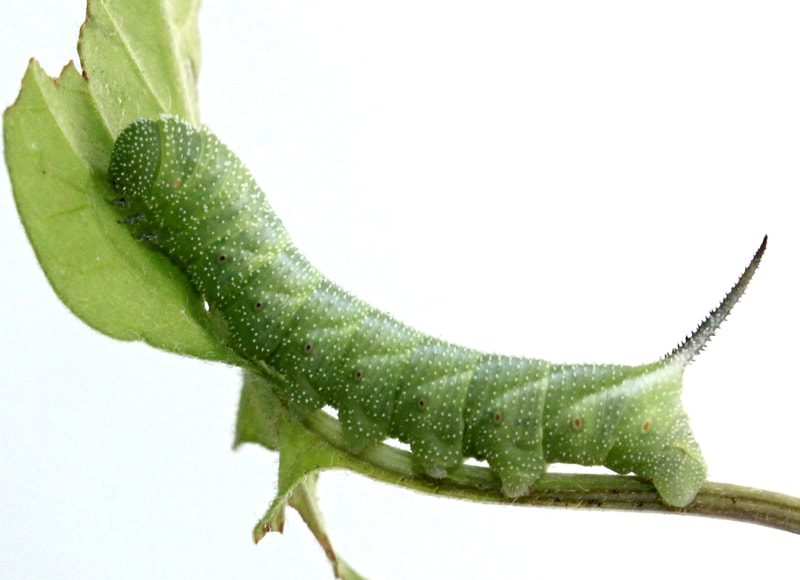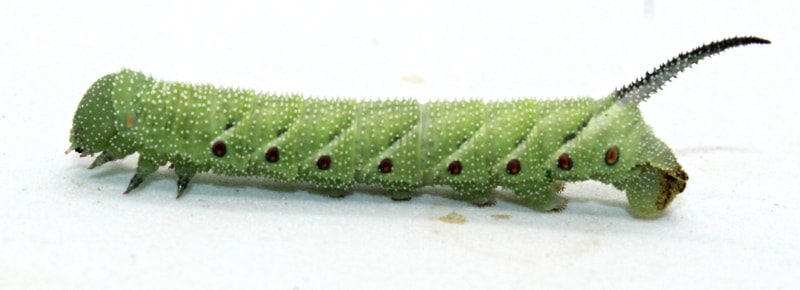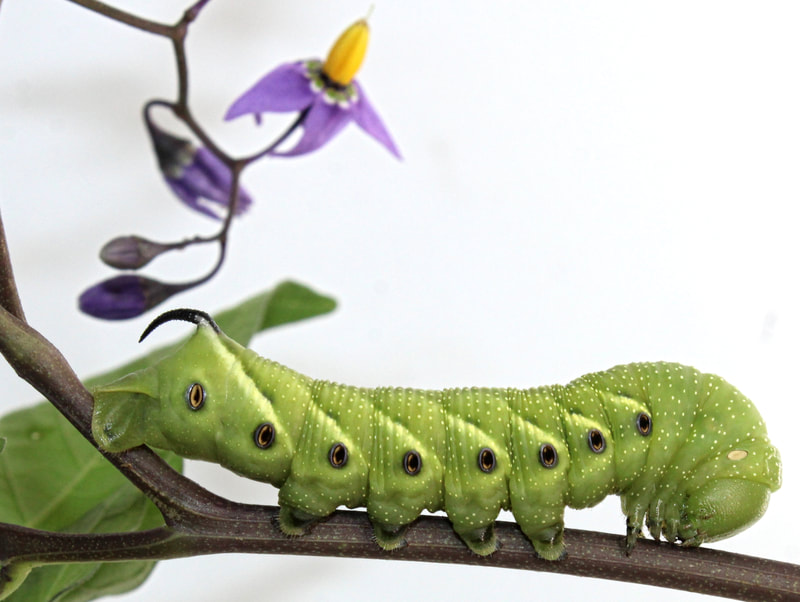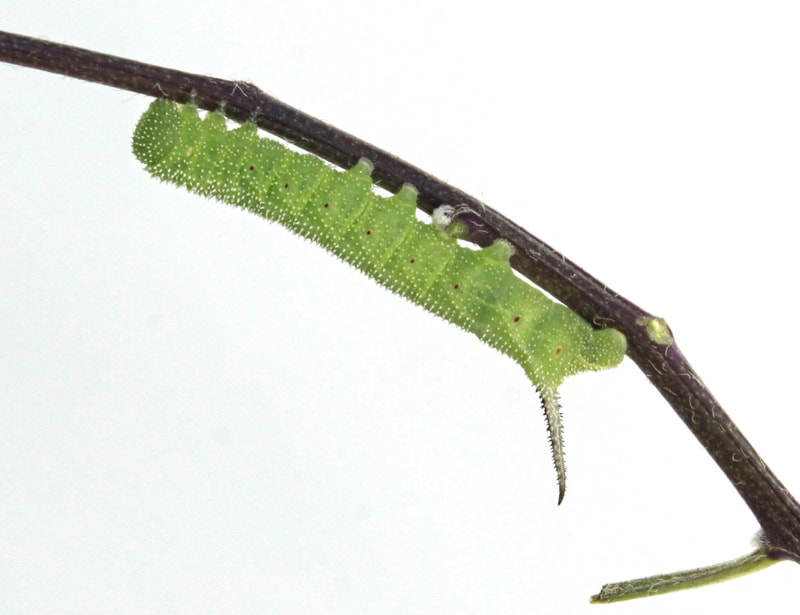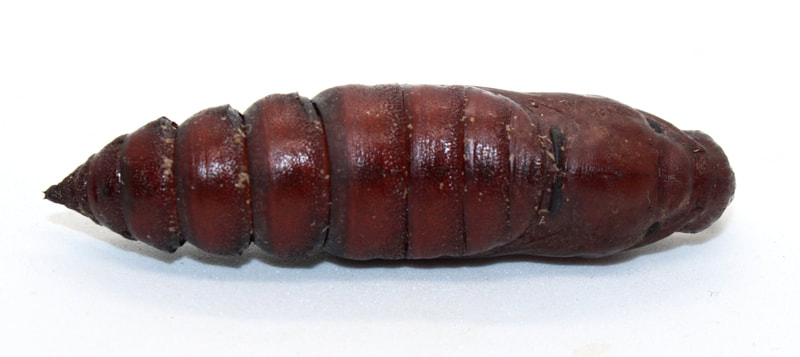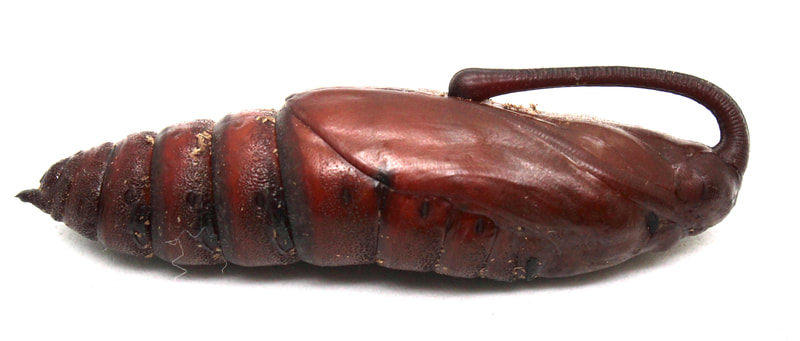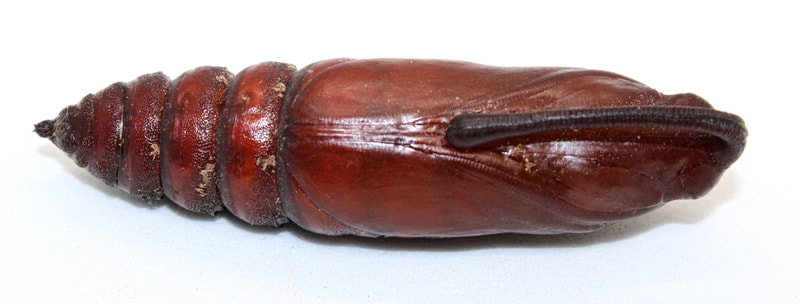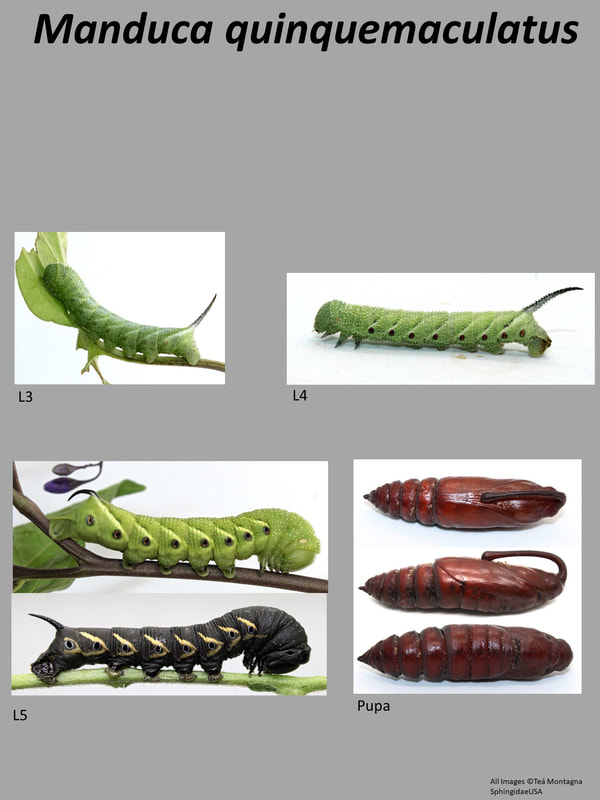|
Common Name(s): Tomato Hornworm,
Five-Spotted Hawkmoth Ecology and Life History: This moth is active throughout the warm months in the Northeast, Midwest, and West, and during the monsoon season in the Southwest. In the Southeast, this moth can be on the wing year-round in warm areas. This moth is quite attracted to light, and both sexes will come to it. Bait is an ineffective method of attracting this species. Additionally, searching flowers at dusk may net you nectaring adults. This moth is not sexually dimorphic, both males and females have the same patterning. Males tend to have thinner more triangular abdomens that end in a point. Females have rounder, more conical abdomens with less of a noticeable tip. Eggs are laid on the leaves and stems of hostplant. In captivity, eggs will also be deposited on nearby surfaces. The first instar larvae will chew small holes in the leaves of hostplant before settling down to molt. The remainder of the life cycle is spent on the plant consuming leaves. Larvae can hide anywhere on the plant, but are most reliably found on the undersides of leaves. Habitat and Searching for Larvae: This is a species of Solanaceous plants. Much like its cousin Manduca sexta, this species can be a pest of gardens. Datura and Solanum seem to be favorites. As Solanaceous plants never get very tall, this species is seldom out of reach. They can be found virtually anywhere on the plant, including on leaves draped on the ground. This species can be found in deserts, gardens, yards, fields, and anywhere it’s hostplants grow in quantity. It has been declining in the Northeast due to introduced parasitoids and management for Manduca sexta. Larvae can be found from May through October throughout most of its range. The chevron markings on the sides of these larvae glow brilliantly in UV light making the larvae easy to locate. Rearing Notes: Eggs can be obtained by placing females into a flight cage with hostplant and a nectar source. Sometimes adults will lay in paper bags, but this is unreliable. Larvae are happy when kept on Solanaceous plants. Datura and the wild Solanum species have been shown to be most effective. They will consume Tomato. This species is quite susceptible to high humidity. Larvae will perish rapidly if kept in high humidity for too long. Larvae can be kept together in mesh rearing cages, with little problem. Younger larvae may cannibalize small larvae. Sleeving is a great method for rearing this species. Due to the high volume of plant matter consumed by larvae, it is advised to not place too many larvae in one cage. Pupation is easy to achieve using the paper towel method, outlined in the general information section of this website. Soil is an equally successful method. Host plants: Click here to load this Caspio Cloud Database
Cloud Database by Caspio |
Adult description:
This is a fairly large moth (52-57mm Forewings (1)). Superficially, it resembles Manduca sexta. The first difference to note, is that this moth tends to be gray, rather than brown. Where the white band is on the outer forewing margin of M. sexta, this species has a straight, gray-white band paralleled by a black lines. The hindwings are also helpful to separate the two species. In this species, there are distinct black zigzag lines through the white areas on the hindwing. Larval description: L5: This is a fairly standard “hornworm”. Often green, but can be black or a pinkish color as well, the distinctive feature is the 8 V shaped markings along the spiracles on the abdominal segments. The horn is black in color. It can be confused with the similar looking Manduca sexta, which has a red horn, and only diagonal lines, not V shaped |
The gallery to the left contains photos of Manduca quinquemaculatus adults. If you have a photo that you would like to submit to us, please contact us.
The gallery to the right contains photos of Manduca quinquemaculatus larval and pupal stages. If you have a photo that you would like to submit to us, please contact us.
The gallery to the right contains photos of Manduca quinquemaculatus larval and pupal stages. If you have a photo that you would like to submit to us, please contact us.
|
|
